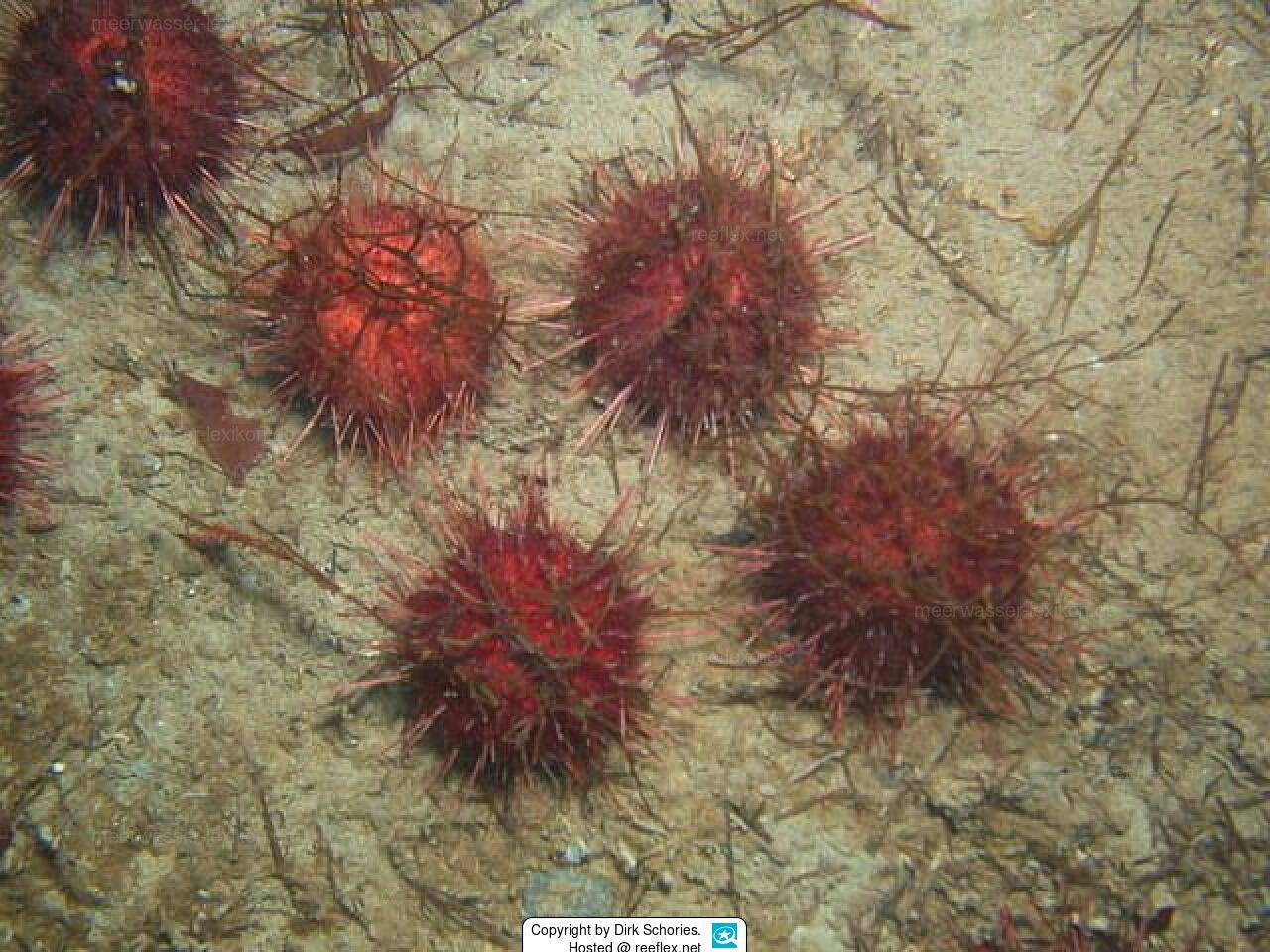Info
Sterechinus neumayeri (Meissner, 1900)
The colour is a bright red to dull purple.The antarctic sea urchin has long, strong and white-tipped spines. Often fragments of red algae on the spines.
Sterechinus neumayeri is circumpolar. Most of the specimens found to a depth of about 250 m.The Antarctic sea urchin can be often found in association with the Antarctic scallop (Adamussium colbecki) and the seastar Odontaster validus.
The antarctic sea urchin feeds mainly on diatoms and other algae, feeds also on foraminiferans, amphipods, bryozoans, hydrozoans, polychaete worms,sponges and detritus.
Synonym:
Echinus neumayeri
Biota > Animalia (Kingdom) > Echinodermata (Phylum) > Echinozoa (Subphylum) > Echinoidea (Class) > Euechinoidea (Subclass) > Carinacea (Infraclass) > Echinacea (Superorder) > Camarodonta (Order) > Echinidea (Infraorder) > Echinidae (Family) > Sterechinus (Genus) > Sterechinus neumayeri (Species)
The colour is a bright red to dull purple.The antarctic sea urchin has long, strong and white-tipped spines. Often fragments of red algae on the spines.
Sterechinus neumayeri is circumpolar. Most of the specimens found to a depth of about 250 m.The Antarctic sea urchin can be often found in association with the Antarctic scallop (Adamussium colbecki) and the seastar Odontaster validus.
The antarctic sea urchin feeds mainly on diatoms and other algae, feeds also on foraminiferans, amphipods, bryozoans, hydrozoans, polychaete worms,sponges and detritus.
Synonym:
Echinus neumayeri
Biota > Animalia (Kingdom) > Echinodermata (Phylum) > Echinozoa (Subphylum) > Echinoidea (Class) > Euechinoidea (Subclass) > Carinacea (Infraclass) > Echinacea (Superorder) > Camarodonta (Order) > Echinidea (Infraorder) > Echinidae (Family) > Sterechinus (Genus) > Sterechinus neumayeri (Species)







 Dr. Dirk Schories, Deutschland
Dr. Dirk Schories, Deutschland



